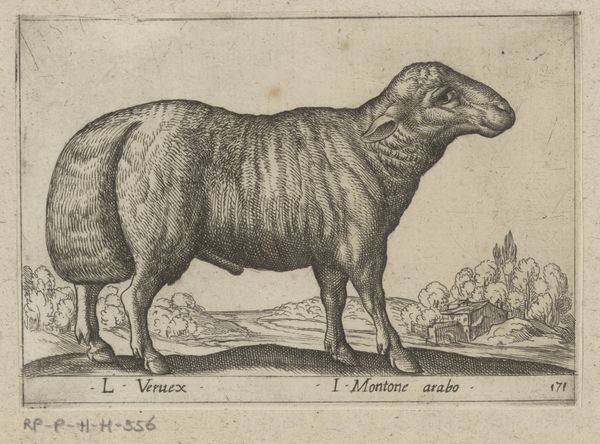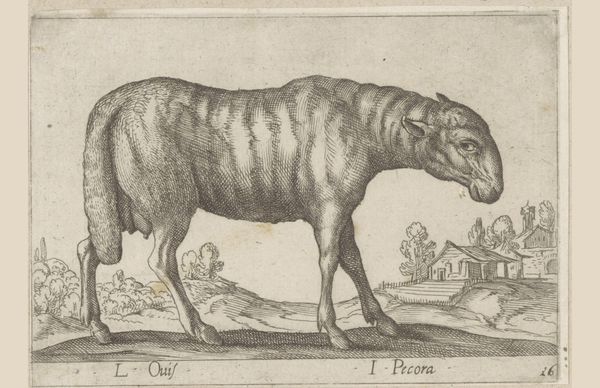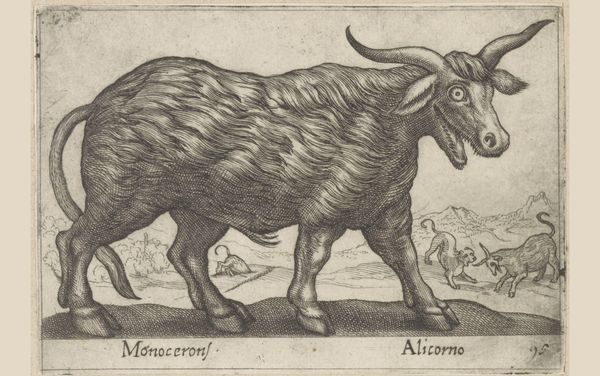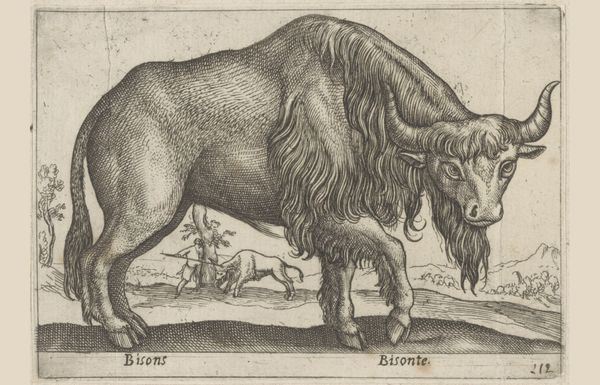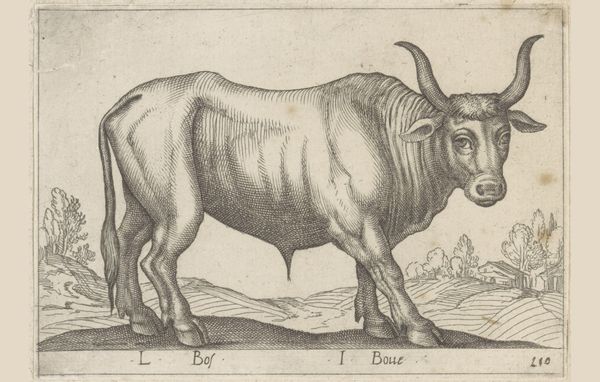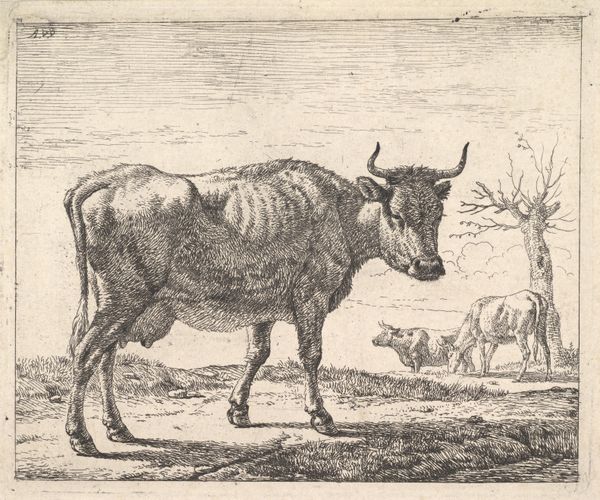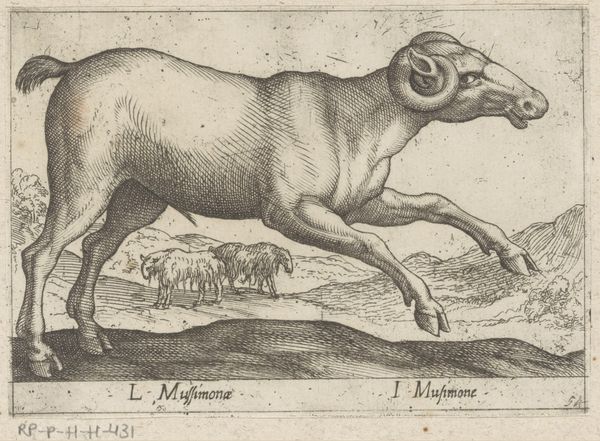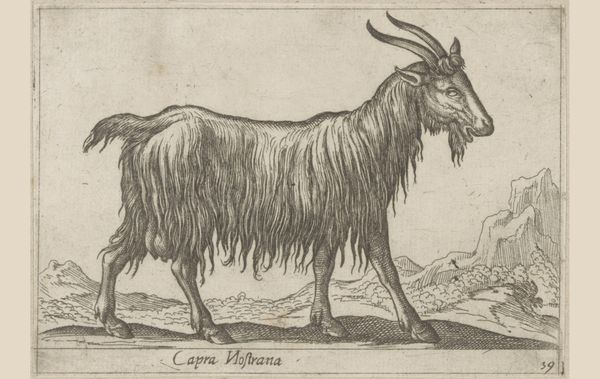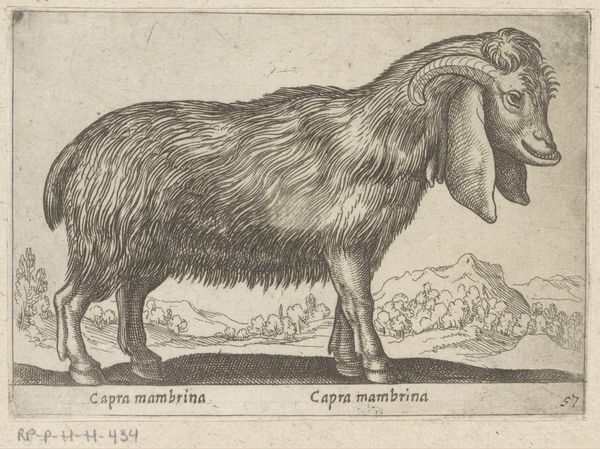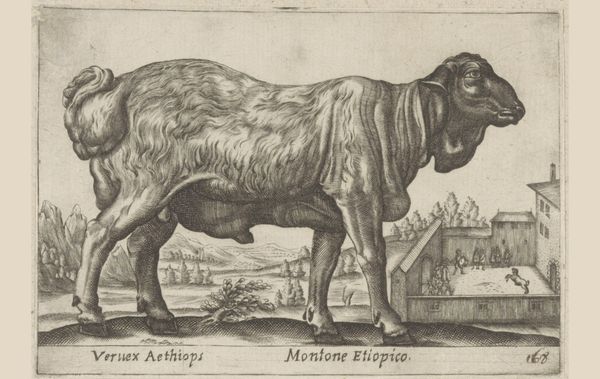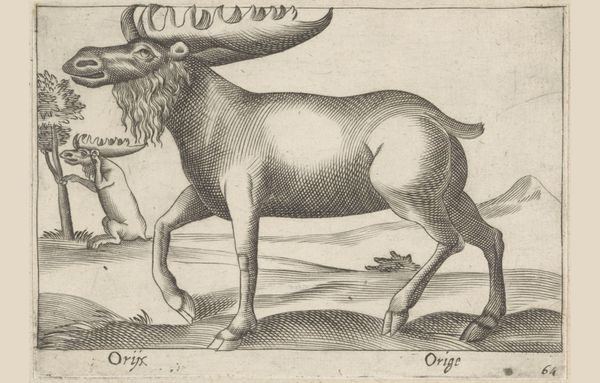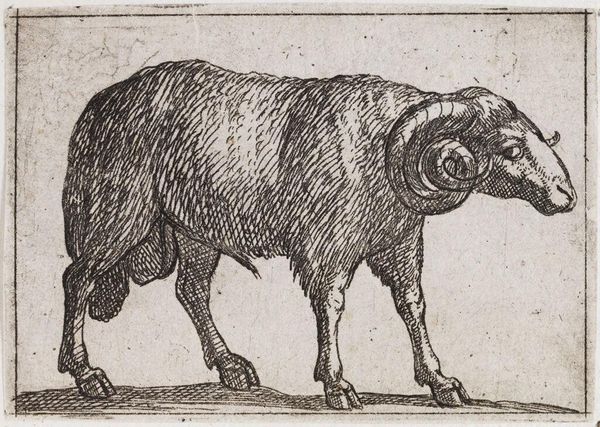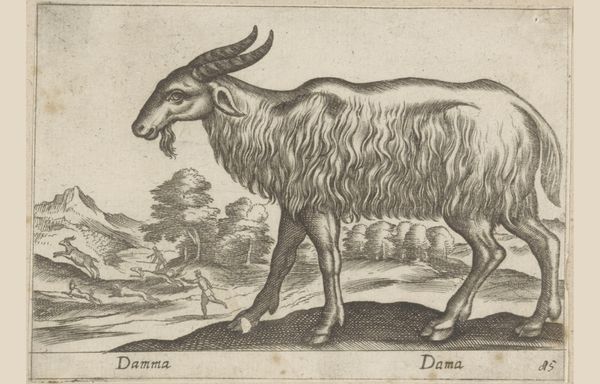
print, metal, engraving
#
baroque
#
animal
# print
#
metal
#
pen sketch
#
pencil sketch
#
landscape
#
figuration
#
pen-ink sketch
#
engraving
Dimensions: height 95 mm, width 137 mm
Copyright: Rijks Museum: Open Domain
Editor: This is Antonio Tempesta’s engraving, "Ram," created before 1650. The sheer texture of the ram’s wool, achieved through such precise lines, is striking! How do we interpret the social relevance of depicting a ram back then? Curator: Well, first consider the Baroque period. It’s a time of immense social upheaval and religious conflict. Animals, especially livestock, weren't just aesthetic subjects. What do you think this ram represents? Is it merely about agriculture? Editor: I guess not, since it’s at the Rijksmuseum… perhaps it has symbolic meaning beyond the animal itself. Is it perhaps connected to the agricultural reforms of the time and the labor dynamics related to livestock farming? Curator: Precisely! These prints often served as propaganda, subtly reinforcing power structures. Who do you think owned the animals depicted in these engravings, and who toiled to care for them? What does it say about wealth and status? Editor: So the focus on the ram’s powerful build could indirectly highlight the affluence and control of landowners. Curator: And think about gender, too. Consider the historical significance of the ram, with its masculinity representing patriarchal structures, as it often does across various cultures. Is the imposing virility reinforcing a certain societal hierarchy? Editor: I didn't consider that. It is also a bit disturbing to focus on its testicles so much… But what did ordinary people make of all this symbolism? Curator: That's a great question! Its circulation might have also inadvertently planted seeds of discontent, maybe inspiring new meanings depending on where the artwork was circulated. It would be really exciting to explore further! Editor: This is definitely an eye-opener; thanks for offering these critical lenses! It highlights how depictions of even simple farm animals are bound to so much socio-political context.
Comments
No comments
Be the first to comment and join the conversation on the ultimate creative platform.
